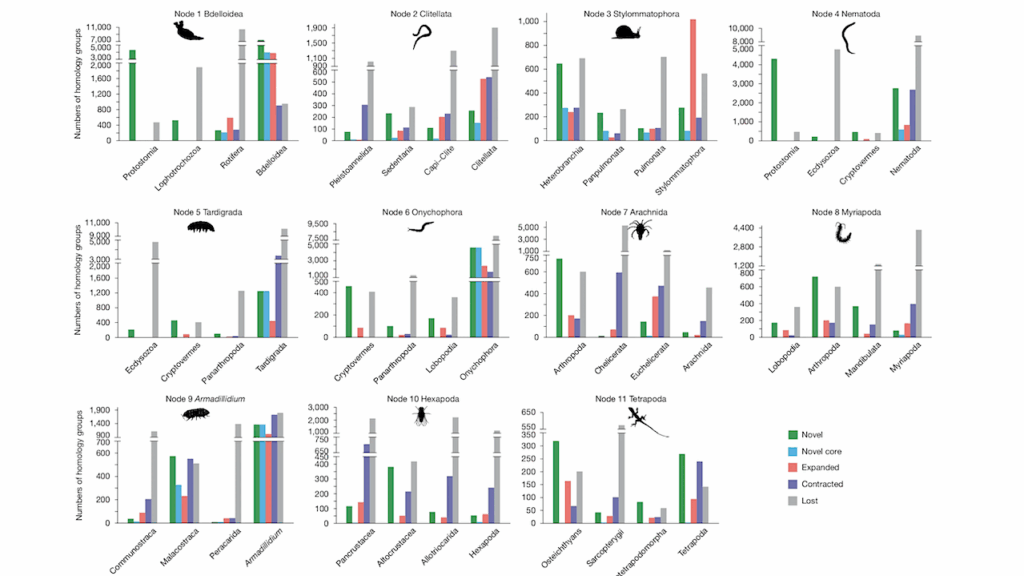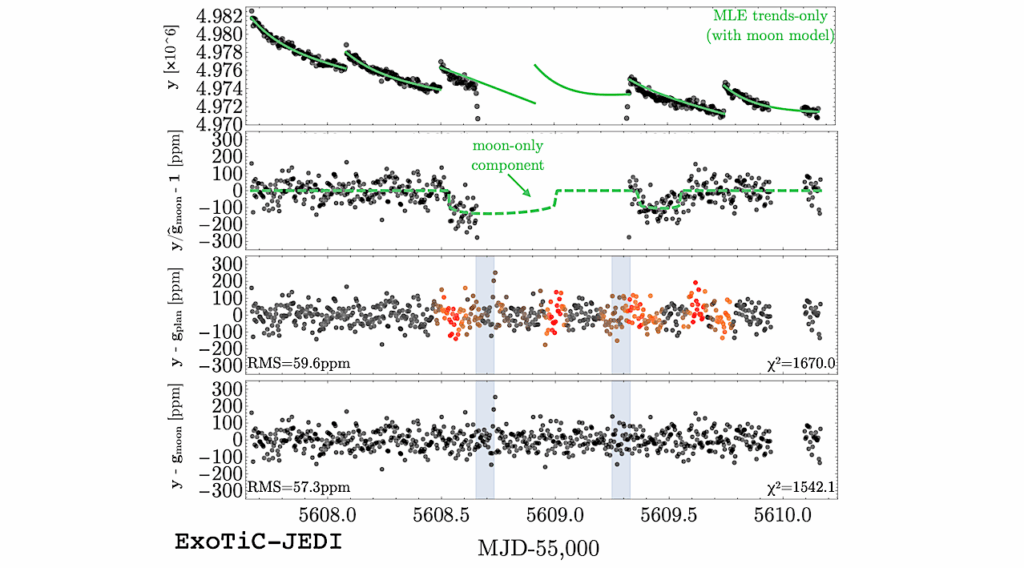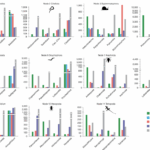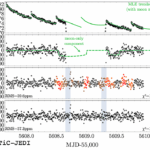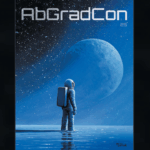Now Reading: The Atmospheric Composition Of TOI-270 d
-
01
The Atmospheric Composition Of TOI-270 d
The Atmospheric Composition Of TOI-270 d
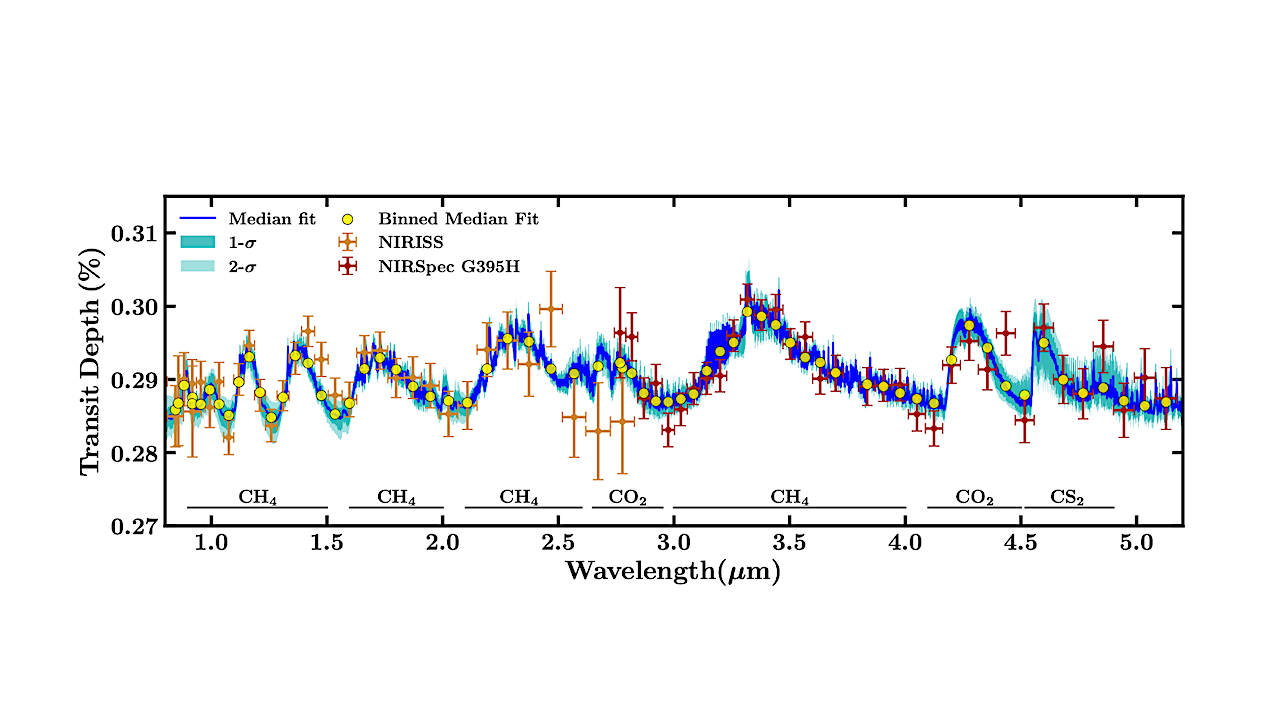

JWST transmission spectrum of TOI-270 d. Orange errorbars correspond to NIRISS observations, presented in this work, while dark red errorbars correspond to NIRSpec G395H observations presented by HM24. The NIRISS observations were binned down to R=25 for order 1 and R=12 for Order 2 for visual clarity. The blue curve denotes the median retrieved spectral fit obtained with our canonical retrieval, described in Section 3. Darker and lighter turquoise shaded regions denote the spectral 1- and 2-σ contours corresponding to the spectral fit. Yellow dots denote the median spectrum binned to the resolution of the datapoints. The NIRISS data are vertically offset by +28 ppm, which is the median offset retrieved for our canonical model. — astro-ph.EP
The first explorations of temperate sub-Neptune exoplanets have been the hallmark of early JWST observations.
The bulk properties of such planets are consistent with a range of possible internal structures, which can be distinguished through their interactions with the observable atmospheres. JWST observations of TOI-270 d, a temperate sub-Neptune, have previously led to contrasting conclusions: either a Hycean world, possessing a liquid water ocean, or a mixed-envelope sub-Neptune, where high temperatures prevent a liquid ocean and lead to a high mean molecular weight atmosphere.
In order to resolve this uncertainty, we present a comprehensive retrieval analysis of TOI-270 d using recent NIRISS and NIRSpec transit spectroscopy across ∼1-5 μm. We find that prior inferences of a mixed envelope were affected by specific modelling choices leading to a high terminator temperature and high mean-molecular weight in the atmosphere.
We confirm an H2-rich atmosphere in TOI-270 d and present revised constraints on the molecular log-mixing ratios and maximal detection significances of CH4 at −1.86+0.30−0.29 (6.4 σ), CO2 at −1.71+0.38−0.66 (3.9 σ), H2O at −1.88+0.78−4.13 (2.1 σ) and CS2 at −4.74+0.65−1.10 (2.0 σ), with a terminator temperature of 323+58−52 K at 10 mbar.
We also find tentative evidence for more complex methyl-bearing species such as C2H6 and/or DMS at a 2.1-2.5 σ level. The present constraints are consistent with TOI-270 d being a Hycean or dark Hycean world, with planet-wide or nightside liquid water oceans. However, more observations are required to verify the present findings and robustly constrain the atmospheric conditions and internal structure of TOI-270 d.
Savvas Constantinou, Nikku Madhusudhan, Måns Holmberg
Comments: Accepted for publication in A&A
Subjects: Earth and Planetary Astrophysics (astro-ph.EP)
Cite as: arXiv:2511.13830 [astro-ph.EP] (or arXiv:2511.13830v1 [astro-ph.EP] for this version)
https://doi.org/10.48550/arXiv.2511.13830
Focus to learn more
Submission history
From: Madhusudhan Nikku
[v1] Mon, 17 Nov 2025 19:00:05 UTC (30,528 KB)
https://arxiv.org/abs/2511.13830
Astrobiology,
Stay Informed With the Latest & Most Important News
Previous Post
Next Post
-
 012024 in Review: Highlights from NASA in Silicon Valley
012024 in Review: Highlights from NASA in Silicon Valley -
 02Panasonic Leica Summilux DG 15mm f/1.7 ASPH review
02Panasonic Leica Summilux DG 15mm f/1.7 ASPH review -
 03How New NASA, India Earth Satellite NISAR Will See Earth
03How New NASA, India Earth Satellite NISAR Will See Earth -
 04And Thus Begins A New Year For Life On Earth
04And Thus Begins A New Year For Life On Earth -
 05Astronomy Activation Ambassadors: A New Era
05Astronomy Activation Ambassadors: A New Era -
06SpaceX launch surge helps set new global launch record in 2024
-
 07Space Force plans new ‘Futures Command’ amid pressure to speed up modernization
07Space Force plans new ‘Futures Command’ amid pressure to speed up modernization













